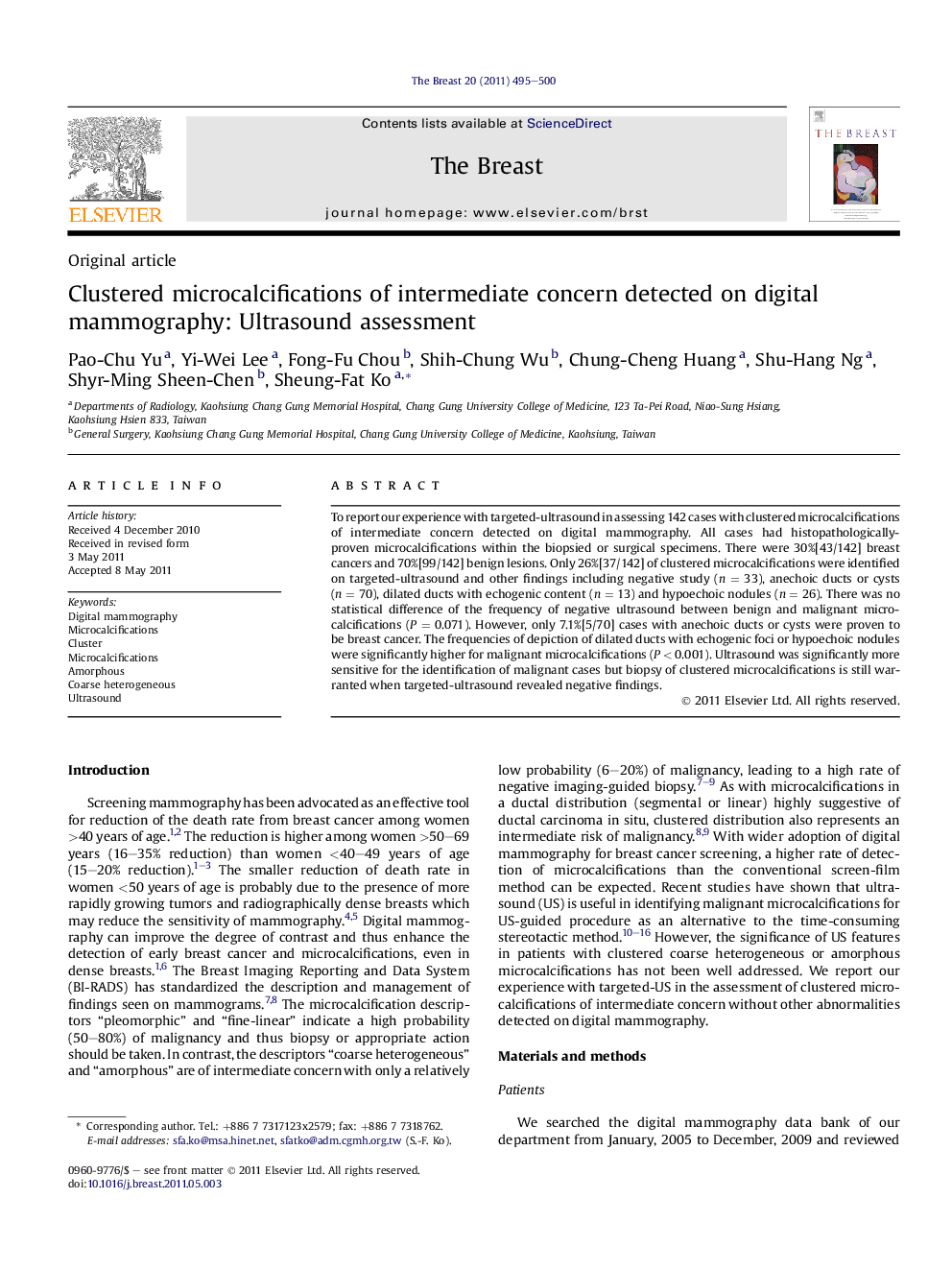| Article ID | Journal | Published Year | Pages | File Type |
|---|---|---|---|---|
| 3909231 | The Breast | 2011 | 6 Pages |
To report our experience with targeted-ultrasound in assessing 142 cases with clustered microcalcifications of intermediate concern detected on digital mammography. All cases had histopathologically-proven microcalcifications within the biopsied or surgical specimens. There were 30%[43/142] breast cancers and 70%[99/142] benign lesions. Only 26%[37/142] of clustered microcalcifications were identified on targeted-ultrasound and other findings including negative study (n = 33), anechoic ducts or cysts (n = 70), dilated ducts with echogenic content (n = 13) and hypoechoic nodules (n = 26). There was no statistical difference of the frequency of negative ultrasound between benign and malignant microcalcifications (P = 0.071). However, only 7.1%[5/70] cases with anechoic ducts or cysts were proven to be breast cancer. The frequencies of depiction of dilated ducts with echogenic foci or hypoechoic nodules were significantly higher for malignant microcalcifications (P < 0.001). Ultrasound was significantly more sensitive for the identification of malignant cases but biopsy of clustered microcalcifications is still warranted when targeted-ultrasound revealed negative findings.
